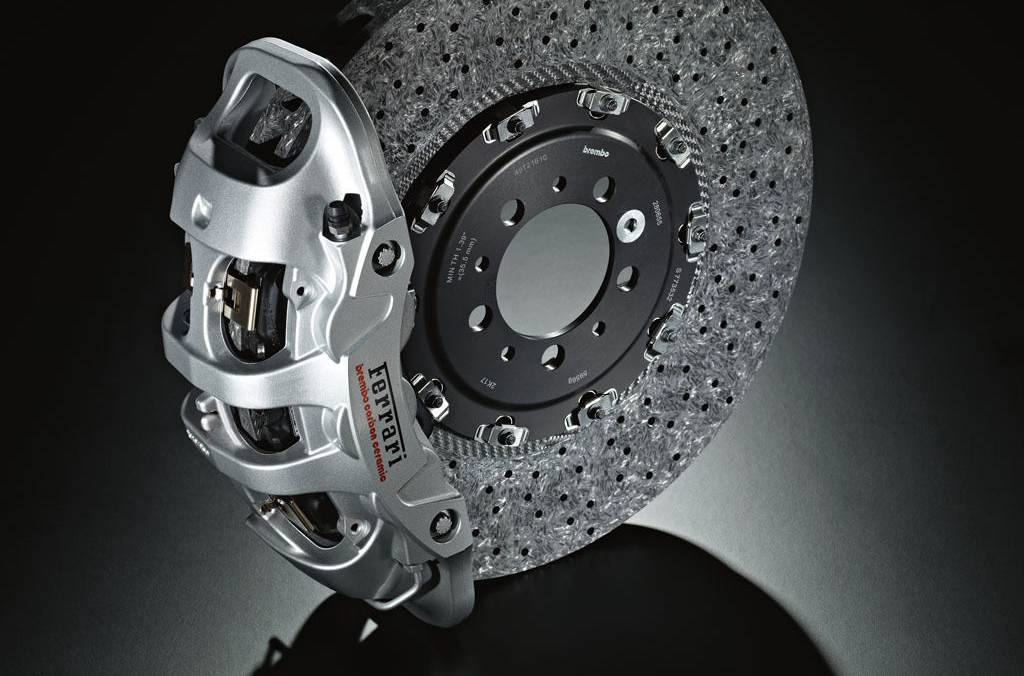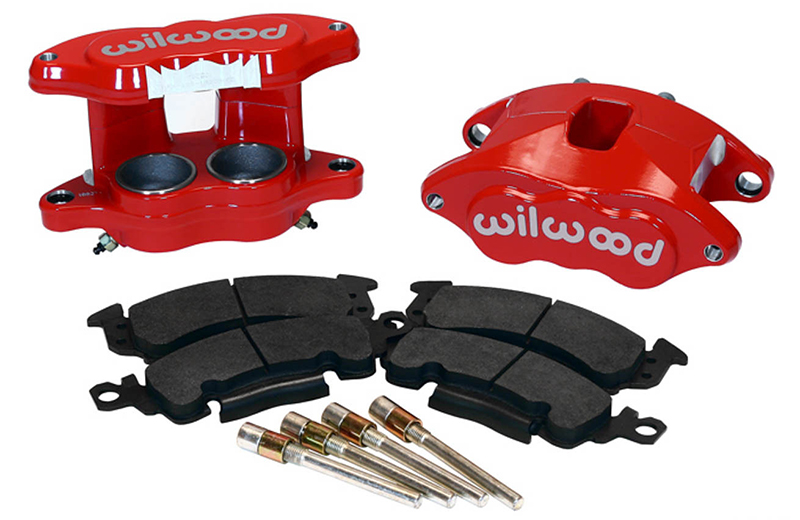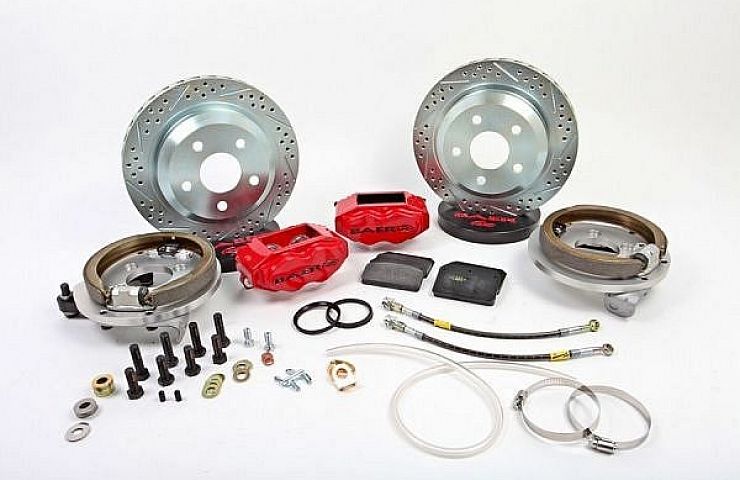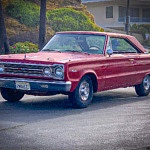Brakes are a critical component of any vehicle’s performance, so it’s surprising how many drivers ignore them when they enhance their engine. If you are adding power under the hood, a performance brake upgrade will help you get the most out of that investment.
Companies such as Baer and Brembo specialize in high-performance braking components, using designs and materials that can handle the rigors of racing without overheating or fading. Most vendors offer complete brake kits designed for specific applications, so all the parts work correctly in unison. Choose a performance brake kit to simplify your upgrade.

The sky is the limit with specialty performance brakes such as this $17,000 Brembo front 15-inch carbon-ceramic brake kit for a Ferrari 360 or F430.
In addition to the easy availability of brake upgrade kits, the nice thing about braking systems is that they’re relatively simple. Except for computer controls, disc brake designs haven’t changed much over the decades. Brakes are a closed hydraulic system, similar to the car’s cooling and lubricant systems.
Brake Fluid, Cylinders and Booster Upgrades
Brake fluid has a lifespan. So brake fluid needs to be bled periodically. Brake lines and vacuum hoses also need to be regularly inspected.
Brake fluid carries a DOT numeric rating from 3 to 5.1, depending on its application. The higher the number, the higher the boiling point. Most tuners prefer silicone to glycol-based brake fluid. Whatever you choose, it’s essential never to mix the two.
All power braking systems have a tandem master cylinder that transfers power from the brake pedal to the brake lines and, eventually, the wheels. Master cylinders can be made of aluminum or cast iron. However, aluminum is the better choice for performance brake upgrades.
- Most cars have a vacuum-actuated brake booster which relies on the engine’s vacuum to provide the power assist.
- Other systems are “hydro-boost,” using the power steering system to power the system.
- Some newer cars have an electro-hydraulic system that combines the power assist with the anti-lock braking system in one unit and uses an electric pump to offer the power assistance.
Because antilock braking systems operate under much higher pressures than older conventional systems, they also have an accumulator that needs to be powered down before opening the system up.
Performance Brake Upgrade Tips
Before upgrading your calipers and rotors, make sure the components listed above are in good working order. Problems such as a spongy or sinking brake pedal often point to issues with the master cylinder. In addition, when you do any brake work, it’s a good idea to check the integrity of vacuum hoses and brake lines.
Disc brakes are blessedly simple. Calipers with reservoirs that fill with brake fluid when the driver steps on the brake pedal apply pressure to the rotors using piston-actuated brake pads. The more pistons per caliper, you can apply more pressure at once to the rotors. High-performance rotors are vented and drilled to keep the brakes cool. In addition, high-performance cars often have air inlets near the brakes to assist in cooling.

Wilwood caliper kit
Caliper designs vary according to OEMs. Fixed, floating, and sliding calipers are standard on passenger cars. Brembo and other performance-oriented manufacturers often choose aluminum over iron to reduce unsprung weight. Ceramic brake pads tend to be longer-lasting in high-performance applications.
Read this: Three Types of Brake Pads to Consider.
Since most of a vehicle’s braking occurs in front, the front discs on a passenger car will be larger than those in the back. But for performance brake applications, upgrade all four wheels for optimum results.





